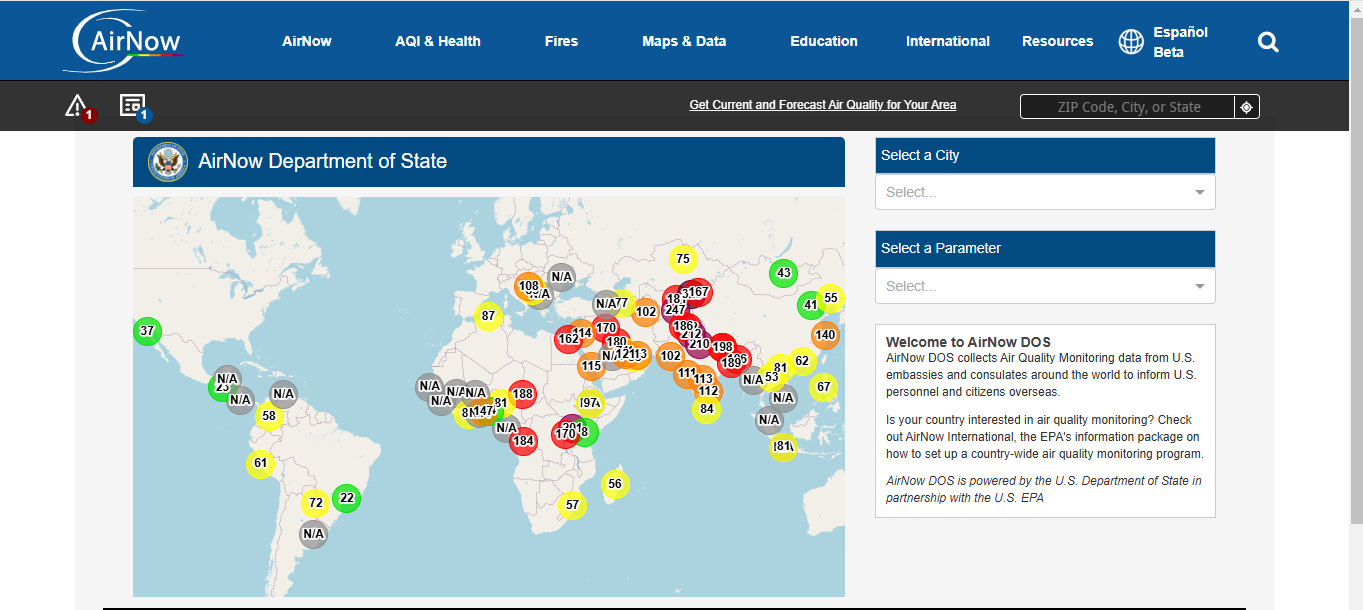This page has moved. If you are not redirected, click here.
Guide to Accessing Air Quality Data from US Embassies Worldwide
AirNow.gov is a collaborative platform involving the US Environmental Protection Agency (EPA), the National Oceanic and Atmospheric Administration (NOAA), and other agencies, dedicated to providing air quality information to the public. Among its offerings is air quality data from US embassies and consulates located around the world. This data serves as a critical resource for researchers, policymakers, and individuals concerned with environmental health and air pollution trends globally.

Accessing the Data
To retrieve air quality data from a specific US embassy or consulate, follow these steps:
- Navigate to the AirNow.gov International US Embassies and Consulates page.
- Select the desired location from the interactive map or list.
- Proceed to the ‘Historical Data’ section to download the available files.
Understanding the File Types
When downloading historical air quality data from AirNow.gov, you will encounter files labeled with terms such as “MTD” and “YTD.” These abbreviations represent different time periods of data collection:
- MTD (Month to Date): Typically, this includes data from the beginning of the current month up to the date the file is downloaded. For example, an MTD file downloaded on February 24, 2025, would contain data from February 1, 2025, to February 24, 2025.
- YTD (Year to Date): This generally covers data from the start of the calendar year up to the download date. For instance, a YTD file downloaded on February 24, 2025, would include data from January 1, 2025, to February 24, 2025.
Additionally, files for complete calendar years are available, such as “2024 PM2.5,” which provides data for the entire year from January 1 to December 31, 2024.
Note: The specific file names and time periods they cover may vary by location and year. Always review the file descriptions or documentation on the AirNow.gov website for exact details.
Interpreting the Data
The data primarily consists of PM2.5 (fine particulate matter) measurements, which are essential for assessing air quality. PM2.5 refers to particles with a diameter of 2.5 micrometers or smaller. These tiny particles can penetrate deep into the lungs and even enter the bloodstream, posing significant health risks.
Some files may also include the Air Quality Index (AQI), a standardized scale that indicates the level of air pollution and its potential health effects. The AQI uses a numerical range where:
- 0-50: Good air quality
- 51-100: Moderate
- 101-150: Unhealthy for sensitive groups
- 151+: Increasingly unhealthy levels
Higher AQI values signify greater pollution and increased health concerns.
Additional Considerations
The air quality data available on AirNow.gov is preliminary and may undergo revisions following quality assurance processes. For critical applications—such as research or policy development—users should verify the data’s status to ensure accuracy and reliability.
Conclusion
The air quality data from US embassies and consulates, accessible through AirNow.gov, is an invaluable resource for understanding global air pollution patterns and their public health implications. By following the steps outlined in this guide, users can effectively access and interpret this data. For more information or to explore the data yourself, visit the US Embassies and Consulates page on AirNow.gov.